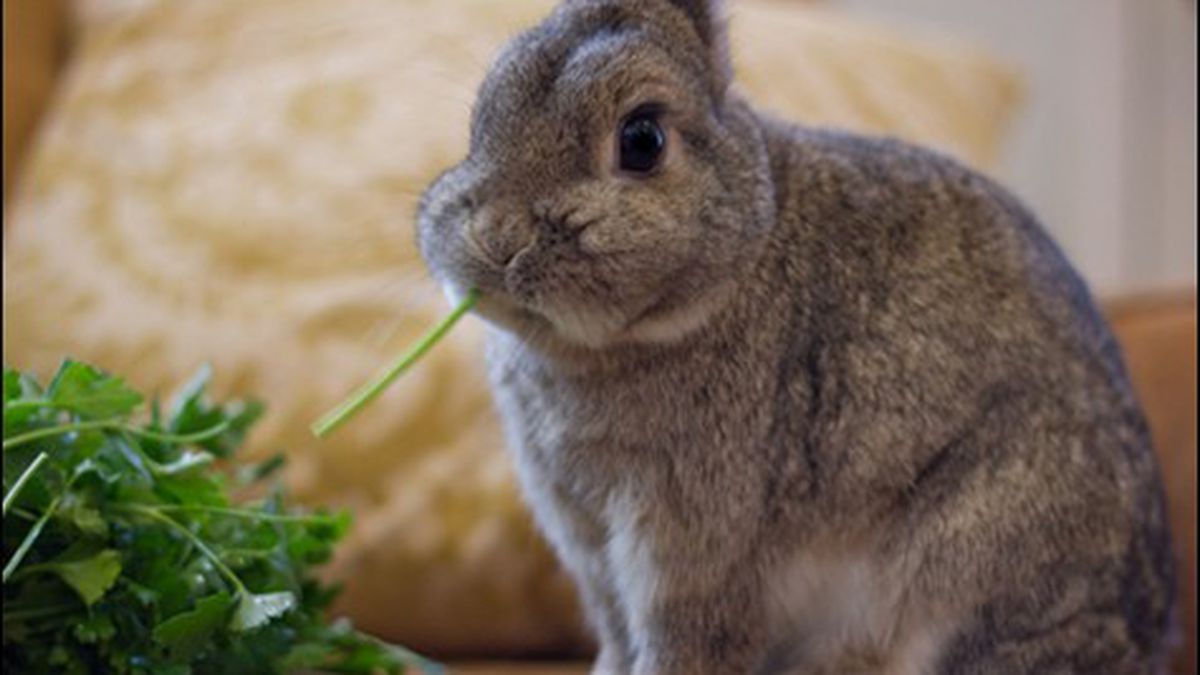A furry blur zips from behind the coffee table, scampers across the living-room floor, makes a quick turn at the bookshelf, and darts behind the couch. Seconds later, you hear a sound. Dig, dig, dig.
“What are you doing back there?” you ask, trying your best to sound authoritative. Silence. That is the sound of a rabbit laughing. And then, as if in response to your question: Dig, dig, dig. Rabbits have no respect for authority.
Bringing a domesticated rabbit into your home is somewhat of a political act. Often used to create profits for the pet industry, animal-testing industry, fur industry, and meat industry, they rely on the whims of humans to survive. But adoption saves rabbits from a grisly fate. They make excellent house pets — if you know how to properly take care of them.
Having worked with rabbits for years at municipal animal shelters, animal rescue groups, and animal sanctuaries, I have rescued countless individuals from abuse and neglect. I share my apartment with several adopted rabbits, and am an educator for the House Rabbit Society. Yes, I also own bunny slippers.
Baby rabbits are docile, cute, and require only their mother’s milk, but when they hit puberty, they start becoming “subversive.” This is the point when the majority of rabbits are dumped, either at a shelter or outside. A spayed or neutered rabbit will be more social, easier to litter-box train, and will help reduce the number of orphaned rabbits.
Unfixed rabbits that are “liberated” outside can create a population explosion, if they aren’t killed by predators first. There is also a consensus in the animal-rescue community that there is no way to house a rabbit humanely outdoors. Backyard hutches leave rabbits susceptible to cold, heat, predation, abuse, neglect, vandalism, and theft. We see the same bad situations again and again.
If you want a pet bunny, visit your local shelter first. Adopted rabbits make great companions, and thrive living indoors with a human family. Just like people, rabbits come in all shapes, sizes, colors, and orientations. They have their own unique personalities, so when you are ready to adopt, try to get to know the rabbits you meet as individuals. This will help you find one that is most compatible with your lifestyle. Don’t worry about getting a “mutt.” Reclaim the discourse; create your own breed name!
Basic needs include a litter box, timothy hay, water, fresh greens, a small cup of quality pellets once a day, regular vet checks, and lots of love. Adopting a single bunny is okay — so long as your new companion gets enough human attention — but ideally you want to bring a pair (or trio) into your home so that when you are not around, they have others to conspire with.
Living with a rabbit takes patience. They live eight to twelve years, and are just as much work as a cat or dog. Like any good roommate, rabbits won’t leave the toothpaste unrolled, “borrow” your car without asking, or drink the last beer in the fridge. What they will do is express the few remaining natural behaviors that have endured through domestication. If you aren’t prepared, some could come as a surprise.
Rabbits dig, chew, and need lots of space to run and play. You can’t really discipline a rabbit — remember the lack of respect for authority? Providing lots of chew toys and other means of destruction is essential. Dumpster dive some cardboard boxes to keep your bunny occupied.
But what about actually living with your big-eared, wriggly-nosed comrades? The ideal place for a rabbit is a living room, assuming it is adequately bunny-proofed. Cover your cords or they will get chewed. A puppy exercise pen is a good enclosure because you can close it when you’re away, and open it to provide “hop time” when you’re home.
Put a litter box that is at lease twice the size of your rabbit in the pen, along with rabbit-safe litter (see Rabbit.org for a list). Pile a generous amount of timothy hay on top of the litter. Hay is the staple of a rabbit’s diet, and also keeps furry feet dry. Add fresh hay two or three times a day to encourage maximum fiber consumption. Regular hay eating is essential for good health. Change the litter box once every other day. Provide a large ceramic crock for water — the kind sold for dogs work well. This encourages hydration better than a water bottle. Always keep the bowl full of fresh, clean water.
Victory garden overflowing with greens? Not only are kale, cilantro, parsley, dandelion greens, collard greens, and chard healthy for you, they’re also good for your bunny. Be a farmer; grow your own.
If you have an apple tree, you can even give the branches to your rabbit for chew toys. Watch out, though, as many other woods are toxic. Fruit is a good one-a-day treat: Feed bunny a portion of raisins, dried cranberries, or apple about the size of your pinky. Feed a small dish of pellets only once a day. Follow the portions on the bag, and avoid anything with seeds or nuts. Buy organic and fair trade, so you don’t support the exploitation of human animals to feed nonhuman animals.

















